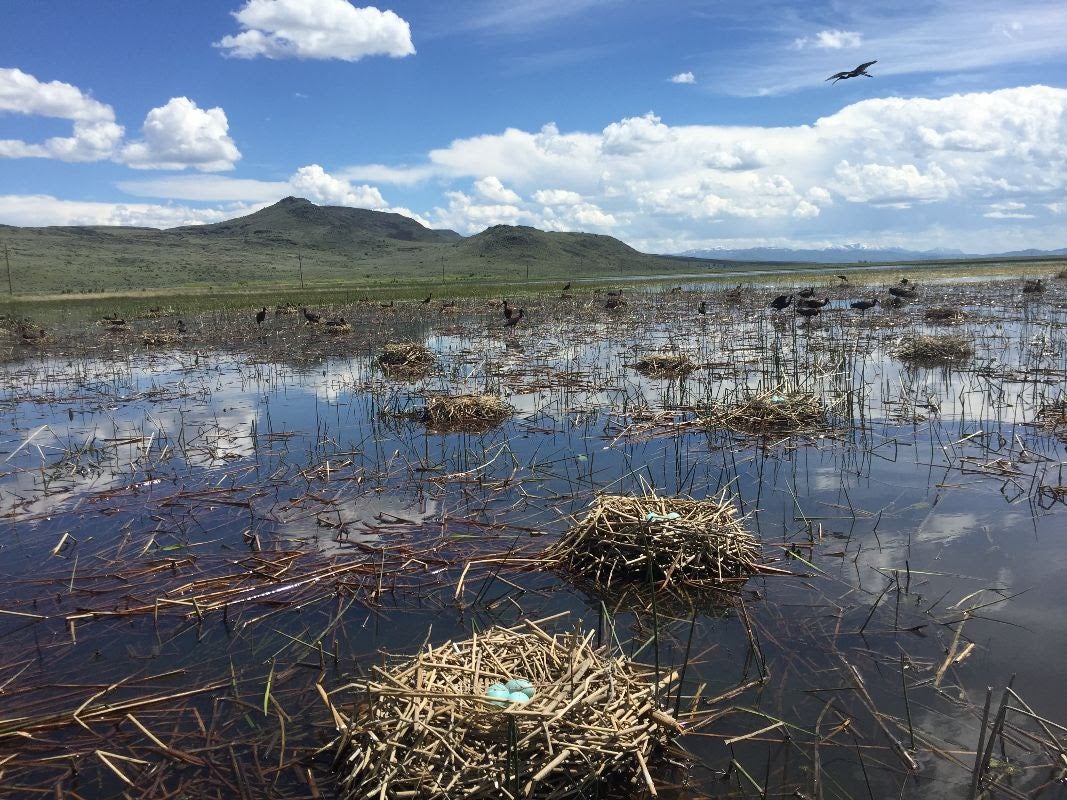Department of Biological Sciences
Thesis Defense
Jamie Burke – MS Biology
How Water Level and Irrigation Practices Affect Waterbird Community, Nesting, and Foraging Habitat Use on The Duck Valley Indian Reservation
When: Tuesday, March 17, 2020
Time: 9:00 AM
Where: Education 109
Advisor:
Dr. Jay Carlisle, Biological Sciences

Committee:
Dr. Pete Koetsier, Biological Sciences
Dr. Jinwon Seo, Shoshone-Paiute Tribes of the Duck Valley Indian Reservation
Abstract
Loss of habitat continues to threaten all bird populations. Despite efforts for conservation of wetlands, waterbirds continue to face habitat threats especially in western North America where water resources are limited across the landscape. The White-faced Ibis (Plegadis chihi) is a colonial nesting waterbird of conservation concern that builds nests in emergent vegetation of freshwater wetlands throughout the western United States. A known ibis breeding colony site located at the Blue Creek Wetland complex on Duck Valley Indian Reservation may face habitat threats in the future due to plans intended to increase irrigation water use efficiency. Plans include manipulation of water levels in the wetland and conversion of flood irrigation practices to sprinkler irrigation which may alter nesting and foraging habitat quality and availability for waterbirds.
We conducted an assessment of waterbird populations, especially including the ibis, to add critical information that could help conservation planning at this important bird site. We compared secretive marsh bird density, local nesting habitat changes, and ibis breeding success during two years with naturally different water levels, and in 2019, we modeled ibis nesting success with habitat variables we predicted might influence nesting success. We did not see a difference in density of secretive marsh birds or abundance of ibis from 2018 to 2019. However, higher natural water levels in the wetland in 2019 decreased availability of emergent vegetation needed by ibis for nest building and we observed some catastrophic nest failures due to exposure to harsh weather events.
As a result, apparent nest survival for ibis was lower in 2019 than 2018. Additionally, we investigated foraging habitat selection by ibis of agricultural fields with different irrigation practices surrounding the breeding colony. We found ibis foraged most often in the natural wetland areas but frequently used flooded agricultural fields as additional foraging sites. We modeled habitat selection and our results suggest the presence of water, resulting in saturation of a field with standing water, is the main predictor of selection. We also investigated differences in macro-invertebrate abundance and diversity of agricultural fields with different irrigation practices which may also drive foraging habitat selection. Our results suggest no differences in diversity between irrigation practices, but abundance was higher in naturally flooded areas and in flood-irrigated fields than sprinkler irrigated fields. Given the importance of this wetland site to a variety of wetland birds, understanding the effects of changes to irrigation practices and water management on waterbird community structure, nesting habitat, and foraging habitat availability is necessary to help shape adaptive management practices. Overall, our results provide information for future waterbird conservation planning and will be especially informative in increasingly human-controlled environments.